10 South American Cactus Plants that You Must Know
South America, a land teeming with diverse ecosystems, is home to most of the cacti on Earth. These spine-adorned plants are not just survivors of extreme climates; they are living plants that add beauty to your garden and home.
Today we will go through 10 interesting native South American cacti that thrive well in the continent's climate.


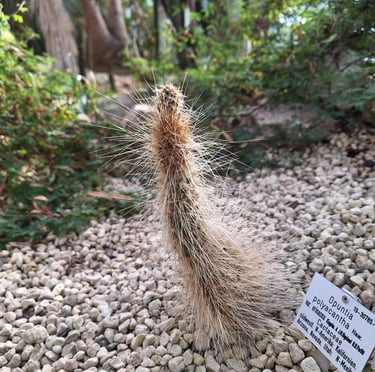





Silver Torch
The Silver Torch cactus reaches skyward to 2-3 m (7-10 ft) and after inspecting it we saw that it is adorned with dense, silvery spines, that shine in sunlight. This slender, columnar South American native cactus plant prefers cooler temperatures and moderate water, reflecting its home continent's seasonal rains. Its blooms are often pollinated by hummingbirds.




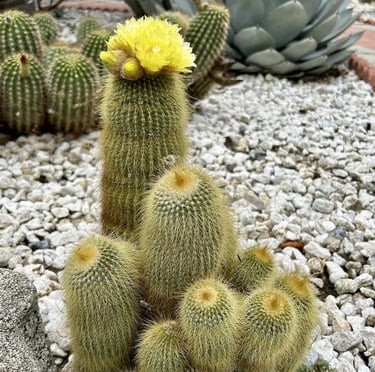

Golden Ball Cactus
The Golden Ball Cactus, cloaked in golden spines, grows to 30-45 cm (12-18 in). Native to southern Brazil, it demands bright sunlight and occasional watering, thriving in the warm, tropical climate.




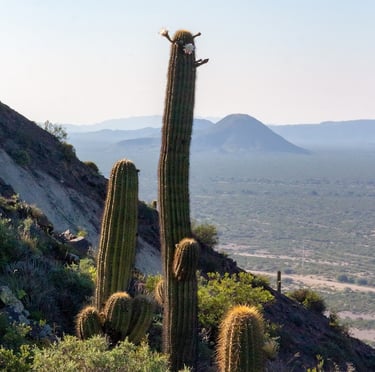

Cardon Cactus
Towering at majestic heights of up to 10 m (33 ft), the very tall Cardón Cactus is a pillar of the South American cactus community Similarto the Saguaro Cactus in South West America. Thriving in the high altitudes of the Andes Mounains, this full sun cactus requires well-draining soil and a little watering. The South American cactus, also has nocturnal flowers.



Bunny Ears
Originating from Mexico, this cactus is named for its paddle structure resembling rabbit ears. It has creamy yellow flowers and grows to a height of 60-90 cm (24-35 in), thriving in full sun during summer, parallel to most African cacti, and partial sun in winter.
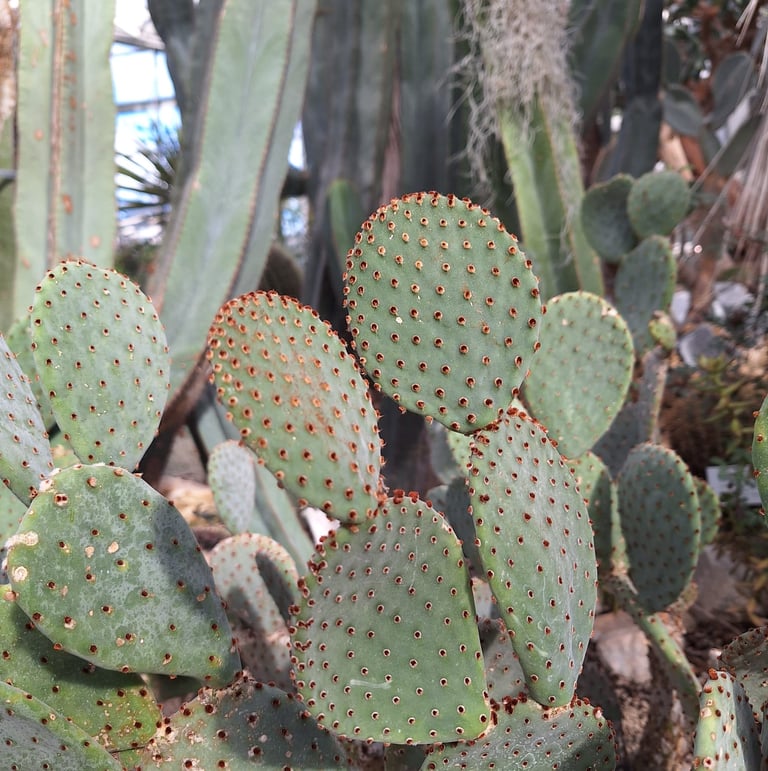





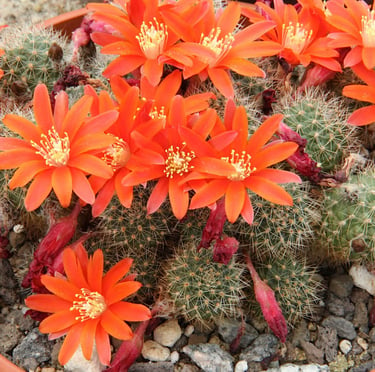

Orange Crown
The Easter Lily Cactus is not native to Japan but thrives well in Japanese gardens. Growing up to 60 cm (24 in), this cactus blooms large, fragrant, white flowers. Like many Japanese cacti, it prefers sunny locations and well-draining soil. Its ease of growth and stunning blooms make it a popular choice among gardeners.


Cereus Jamacaru
Native to Brazil, Cereus jamacaru or Cardeiro, the cactus, demands less water than other species of cacti. Its slender, towering form stands as a nocturnal beacon, similar to the Cardon Cactus. When the succulent is in bloom, it colors the night with its white nightblooming flowers.




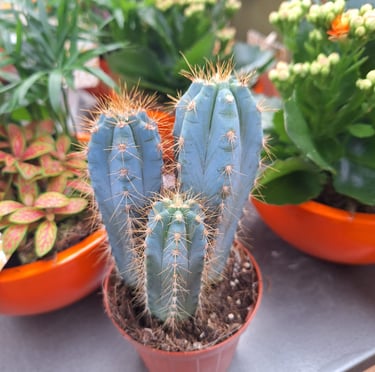

Blue Columnar Cactus
This high towering cactus plant can reach up to 5 m (16 ft), with a distinctive blue-green hue. Native to Brazil, the Blue Columnar Cacti require bright light and dry soil to flourish, bringing the arid regions of South America back to life. Its minimal water needs reflect the efficiency of cactus plants in water conservation and being hassle-free plants overall.


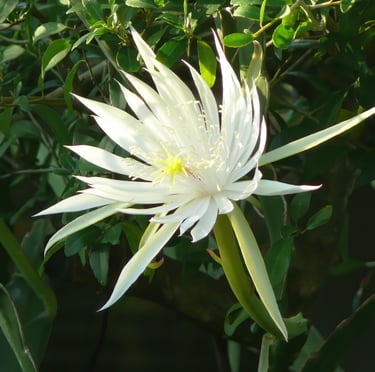

Hooker's Orchid Cactus
Hooker's Orchid Cactus, also known as Epiphyllum hookeri is, similar to the Cereus Jamacaru and the Cardón Cactus also a nigtblooming cactus with white flowers. The skinny white petals distinctively mark its identity. The South American cactus is native to Brazil.




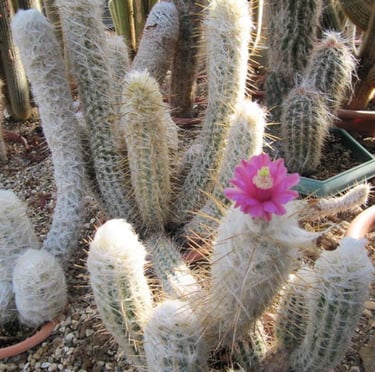

Old Man of the Andes
Resembling an ancient sage, this cactus also known as Oreocereus trollii, can grow to 2-3 m (7-10 ft). Its shaggy coat of long, white hair provides protection from the intense high-altitude sun, characteristic of the South American Andes while growing at similar altitudes like the Cardon Cactus. It requires moderate watering and high light levels to simulate its native mountainous conditions.



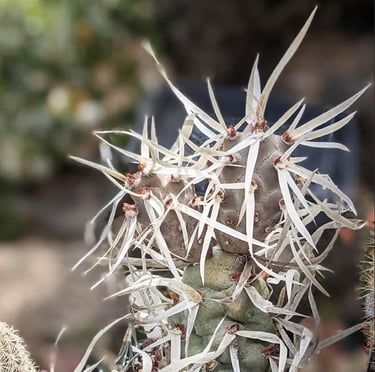

Paper Spine Cactus
This relatively small South American plant, with its green-grey stems and paper-like spines, typically stands at 30 cm (12 in). It's a product of Argentina’s rugged terrain, seeking a sunny spot and minimal watering to thrive. Its ability to detach segments for propagation shows the adaptive ingenuity of South American plant life.







Article By:
Calin is in the garden industry for 5 years now and knows a lot about gardening and plants. He is the owner of this website and responsible for most of the content.



